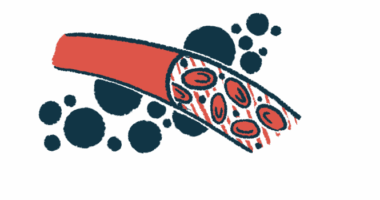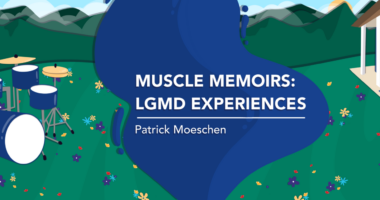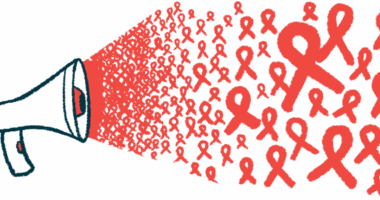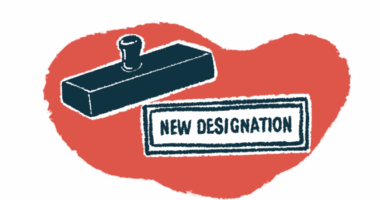Adaptive solutions: Assistive technologies for DMD
Last updated June 21, 2024, by Susie Strachan

Adaptive equipment for Duchenne muscular dystrophy (DMD) will not only support your independence but also elevate your quality of life by helping with mobility, eating, bathing, and communication.
By adding smart technology and making modifications to your living space, it is possible to create a more comfortable and accessible environment.
How adaptations and assistive technologies help people with DMD
Adaptive aids can help you better manage the physical changes from DMD, including symptoms caused by progressive muscle weakness. They also can enable you to be more independent in daily life at home, school, at leisure, or at work.
Adaptive aids are devices designed to provide support and assistance tailored to your needs and abilities based on symptoms as well as your age.
- Young children may require pediatric equipment that is the right size to help with mobility limitations and be a preventive measure for symptom progression. Some aids include adaptive strollers with postural support, bath seats with back support, and ankle-foot orthoses for maintaining ankle stability.
- As it becomes harder to walk, stand, and do tasks independently, additional assistive devices may be needed, such as lightweight manual wheelchairs, including those for wheelchair sports, and adaptive seats and desks in school classrooms.
- Other challenges related to DMD, such as vision or speech problems, or heart issues, may increase the need for other aids and technology, such as power wheelchairs and speech recognition software for using a voice-controlled computer.
As a caregiver, you may decide to make home modifications, such as installing ramps or chair lifts to help your child more easily navigate throughout your home, or incorporating smart home devices into your living space that allow lights, entertainment systems, and other hard-to-reach fixtures to be controlled by voice.
Muscular Dystrophy News Today columnist Betty Vertin wrote about her three sons who have DMD and their use of technology and other aids.
“Watching them grow up and progress through the stages of ambulation, and taking inventory of all the assistive equipment that has come and gone over the years, was like reading a parenting manual,” Vertin says.
While her sons now each use a power wheelchair to get around, she says the chair doesn’t define who they are.
“The boys sit in their chairs; their chairs are not them,” she says.
Physical therapy or occupational therapy treatments may include sessions with standing frames to maintain muscle, or slings to do transfers from chair to therapy table. The therapist may recommend orthotic devices to correct ankle contractures and scoliosis, among other preventive measures.
Mobility devices
Mobility aids such as wheelchairs, scooters, canes, and walkers enable people with DMD to move around independently and safely.
When muscle weakness is at its early stage, children may find they only require occasional support during longer walks or when fatigue sets in, unless advised otherwise by a DMD healthcare team.
These can include using a:
- pediatric wheelchair
- adaptive stroller
- manual or power scooter
- gait trainer or walker.
As children get older and require more support to balance, walk up stairs, or run, they may need to change to devices offering greater mobility assistance, allowing them to conserve energy and travel longer distances.
These include:
- manual wheelchair, which is lightweight and self-propelled
- sports wheelchair for activities such as wheelchair soccer or softball
- standing frame or standing wheelchair to assist with weight-bearing and standing activities.
Teenagers may notice that as walking becomes more challenging, they may start to rely on a mobility device most of the time. A power wheelchair with an electric motor to provide propulsion can help when navigating uneven terrain or traveling for long distances.
Orthotic support
As muscles start to weaken, you may also experience leg cramps, contractures (when muscles shorten and tighten), and joint pain.
Orthotic devices may be needed from an early age onward to delay contractures and scoliosis and help with mobility.
Devices include ankle-foot orthoses and knee-ankle-foot orthoses, along with wrist and thumb splints or braces to help weak hands grasp and move small objects. If shoulders are weakening, a sling can help support arms and ligaments.
Assistive technologies
Advancements in technology have been a great help to people living with DMD, from enhancing accessibility with eye-tracking devices, smart eyeglasses, and sip-and-puff devices, to aiding communication and fostering social inclusion through voice recognition software.
Looking to the future, robotics represents an exciting and possibly transformative frontier in assistive technology for those living with DMD.
Communication
Muscle weakness progression may affect the muscles of the face, tongue, and throat, making it difficult to make sounds and form words. Additionally, respiratory muscle weakness can affect your ability to control airflow and vocalization.
Augmentative and alternative communication (AAC) devices, speech-generating devices, and communication apps can help support communication.
Eye-tracking devices use sensors to detect and monitor eye movement to allow you to control a computer, communication devices, and other electronic systems.
Young children may use AAC devices such as:
- picture communication boards or books
- speech-generating devices with programmed messages
- portable word processors with large keyboards and adjustable font sizes.
Devices and apps that can help teenagers and adults with speaking and vision problems include:
- voice recognition software for dictation and speech-to-text conversion
- screen readers and magnification software for reading digital content
- computers with large keyboards and adjustable font sizes
- speech recognition software to control a computer and apps.
Sip-and-puff technology
Sip-and-puff devices consist of a mouthpiece or straw connected to a control unit equipped with sensors that detect changes in air pressure from sipping (inhaling) or puffing (exhaling) air.
By using specific patterns of sips and puffs, people with DMD can activate switches, input commands, and control devices without physical contact or manual manipulation.
Some common uses of sip-and-puff technology include:
- moving a power wheelchair forward or backward, and turning left or right by sipping and puffing into the mouthpiece to activate directional controls
- controlling computers and access assistive technology software and applications, including typing, browsing the internet, and sending emails
- controlling environmental settings and household appliances, such as adjusting lighting, opening doors, operating electronic switches, and controlling home automation systems
- participating in exercise and leisure activities, such as playing video games, reading with an e-reader or audiobook device, and controlling a music player. Outdoor activities such as boating, sailing, fishing, and cycling can be done with sip-and-puff controls.
Robotics
Robotics is a rapidly evolving field that holds promise for the future of assistive technology for people needing help with mobility and accessibility.
This encompasses everything from robotic exoskeletons, power wheelchairs with advanced features, and robotic assistive devices designed to provide personal support.
Power wheelchairs equipped with robotic technology can help you do things like move around more easily, pick up objects, open doors, eat and drink, and help with brushing your teeth and getting dressed.
Robotic arms have a similar range of motion as a human arm. They can be controlled via a power wheelchair’s joystick, head array, or sip-and-puff device.
When shoulder and arm muscles become weaker, power arm supports can assist with daily activities such as brushing your hair or teeth, turning the page of a book, or cooking. These devices, which you slide your arm inside for support when doing tasks, are attached to a power wheelchair.
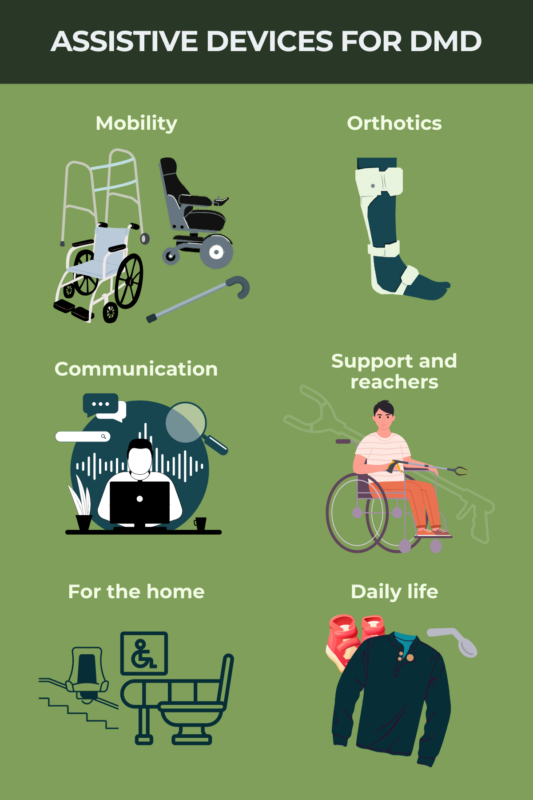
Home adaptations
Home adaptations can include both medical equipment and modifications to your living space, such as a roll-in shower, grab bars in the bathroom, and lever-style faucets.
Medical equipment for home use include transfer devices such as power lifts, adapted toilets, shower chairs, and adjustable beds.
Other renovations might include building ramps, adding a stairlift, widening doorways, motion-activated lights, and flooring materials that are slip-resistant and easy to maneuver on.
You also may want to consider adding environmental control systems, voice-activated devices, and smart home technology, which can include:
- remote controls with large buttons or touchpad interfaces
- voice-activated smart home devices for controlling lights, TVs, and appliances
- doorbell cameras
- remote controls for adjusting room temperature, blinds, and door locks.
Adaptations to help with daily living
DMD adaptive equipment can assist you with everyday self-care tasks such as dressing, grooming, and eating.
An occupational therapist can offer personal guidance on which adaptive aids to choose and how to use each device correctly.
For example, some daily living aids, like reacher-grabbers, can help you grasp and retrieve items from high or low shelves, cabinets, or floors. Pens and pencils with enlarged grips can help reduce pressure on weak hand muscles when writing. Strap-on button-pushers can help with typing on a keyboard.
For eating, consider:
- adaptive utensils with built-up handles, nonslip grips, or angled designs
- cups with built-up handles and dome lids with straws or spouts
- plates and bowls with suction bases.
For dressing and grooming, consider:
- shirts with magnetic snaps or back closures
- pull-on pants with access for medical devices such as a catheter
- shoes with Velcro closures
- sock aids to help pull up socks
- long-handle brushes for hair
- long-handle spoons for applying moisturizers and lotions
- toothbrushes with ergonomic handles and angled heads.
Muscular Dystrophy News Today is strictly a news and information website about the disease. It does not provide medical advice, diagnosis or treatment. This content is not intended to be a substitute for professional medical advice, diagnosis, or treatment. Always seek the advice of your physician or other qualified health provider with any questions you may have regarding a medical condition. Never disregard professional medical advice or delay in seeking it because of something you have read on this website.
Related articles

